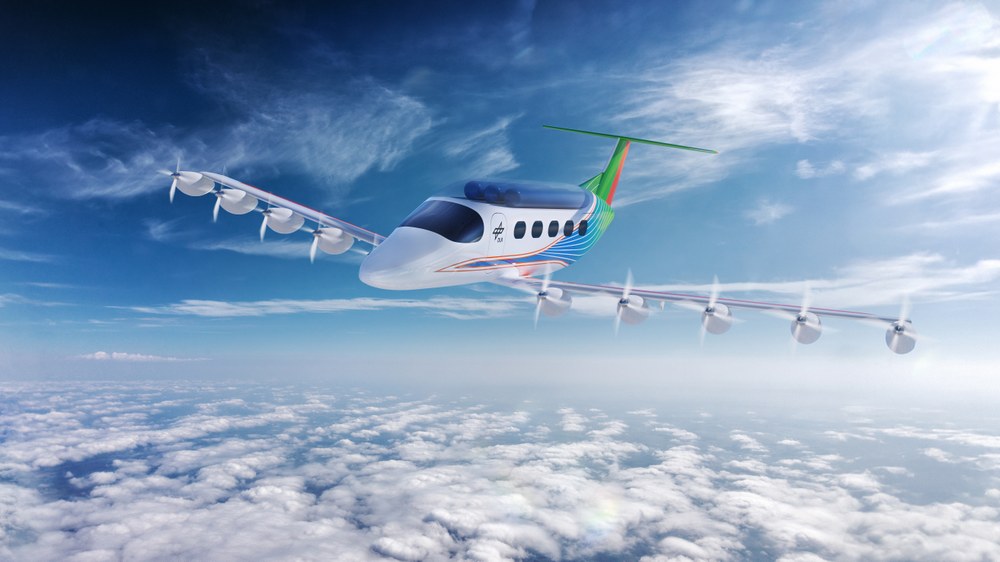D-LIGHT
Within the project D-LIGHT (Digital Climate Neutral Light Aircraft), design and analysis methods for small aircraft are being developed. In its course, relevant technologies are investigated and transferred into a Digital Mock-Up (DMU). Thus, the foundation for a climate neutral small aircraft with a hydrogen powertrain is laid and a well-connected research group at the INK is established in the process.
Aims of D-LIGHT
Small aircraft with up to 19 seats offer a high degree of flexibility and are used worldwide for a wide variety of tasks, such as
- Feeder flights
- Medical missions and patient transport
- Wildfire suppression
- Supply of remote regions
- Pilot training and education
Most of these aircraft were developed more than 30 years ago and are therefore mainly equipped with outdated technology and fossil fuel powertrains.
Due to the steadily increasing climate impact of the aviation sector, it is important to develop small aircraft with novel propulsion concepts and systems. A promising approach are electric fuel cell propulsion systems using climate-neutral hydrogen. This enables new conceptual layouts such as distributed propulsion, which, in combination with advanced components, novel materials and aerodynamic improvements, results in further advancements in the efficiency and the performance of the aircraft.
In the project D-LIGHT, design methods for hydrogen aircraft are being developed. The corresponding technologies and processes are investigated and modeled in various disciplines and subsequently combined in a digital design environment. This will enable the automated generation of concepts and an accelerated design process.
The tools developed in the project will then be used to design a 9-seater hydrogen-powered feeder aircraft, as well as to produce a detailed Digital Mock-Up (DMU). The DMU will consist of a virtual aircraft model which unites the research findings and physical properties of components and systems.
Contribution to electric aviation
The testing and introduction of new propulsion technologies such as fuel cell systems or distributed electric propulsion (DEP) are very cost-intensive and therefore require large investments. Thus, it is advantageous to first perform testing of such technologies on small aircraft. Additionally, the use of digital tools such as the DMU can further reduce the development time and cost of novel concepts and technologies, as well as further advance and accelerate the corresponding certification processes.
Within the project, the proof-of-concept of a small aircraft with an air-cooled fuel cell propulsion in the power class below 1 MW will be produced. The opportunities of distributed propulsion systems, which are only made possible by the electrification of the aircraft, are also part of more detailed analyses. In addition, the technologies and processes developed for small aircraft can potentially be transferred to larger commercial aircraft, which allows greatly reducing their impact on climate change. Thus, D-LIGHT will make a crucial contribution to the success of electric propulsion systems in aviation.
Core Topics
Seven DLR institutes collaborate within D-LIGHT in order to enable a multidisciplinary approach and cover a wide range of domains.
Propulsion/Systems (Institutes TT/FT)
Due to the novel propulsion concept used, one focus is the design and integration of the propulsion system and the required subsystems. A special feature is the air-cooled fuel cell.
Aerodynamics/aeroelasticity (Institutes AS/AE)
The use of distributed propulsion systems makes the aerodynamic design particularly important. Notably, the interaction between the propellers and the wings poses a challenge from an aerodynamic and aeroelastic point of view.
Structure (Institutes BT/SY/AE)In the area of materials and manufacturing processes, the design of the aircraft structure plays an important role. The focus here is the use of composite materials, which are used both in the primary structure and in the hydrogen tank. In particular, sustainable manufacturing technologies are investigated and demonstrated.
Overall design/integration (Institute SL) Especially due to the large number of innovative concepts and technologies, the integration of components into the overall design is a core topic of the project. Primarily, a network of digital tools is used, which offers high flexibility and allows the quick incorporation of adjustments.
Outlook
The D-LIGHT team will apply and further establish concurrent engineering (CE) methods – simultaneous and interdisciplinary development enabling the improvement of process speed and quality – for the small aircraft design process. The DMU will serve INK as a digital, virtual technology demonstrator that can be used in the future to answer questions about the certification of sustainable propulsion technologies. Furthermore, it will serve as a basis to expand the network of the DLR in Aachen with local industrial partners and universities, and will also be used for further DLR-external research. At the end of the project, the utilized technologies will reach a sufficient level of maturity, such that a work plan for the transformation of the developed mock-up into a flight demonstrator could potentially be derived.
Project data | |
|---|---|
Term | 3 years |
Participating institutes (DLR) |

